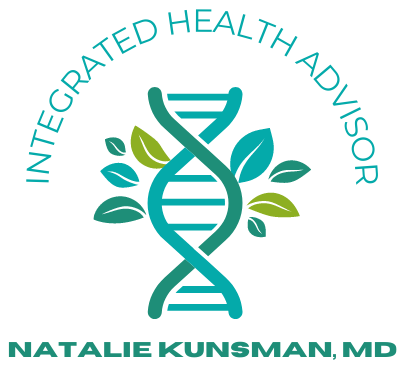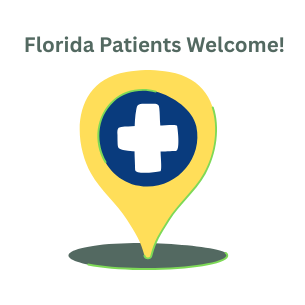I’ll speak to bedside manner as a physician, since that is what I am and have been for twenty-nine years. While social media may not be the best judge of professional conduct, it is the “face” of the perception of bedside manner. I belong to multiple platforms including YouTube, Facebook (groups, private, and business pages), TikTok, and Twitter. I have keyed in to overwhelming despair from patients and patient advocates regarding their experiences with physician encounters. I’m shocked at the shear volume of reports and the type of stories being shared. For each tip for developing good bedside manner (extracted from St. George’s University), I have an example of what has been shared on social media platforms. As I have shared with residents that I have taught throughout the years, the patients are telling the truth the best way that they know how. They have their best interests at heart. It is our job as physicians to decipher a patient’s communication, and if we dismiss it, we are at risk of making the wrong diagnosis or drawing the wrong conclusions.
“…Made me wait for over an hour and didn’t read my chart.”
Ok. Wow. We all know that doctors are busy and emergencies come up, but we are not talking about emergency room visits where there truly are emergencies all day long. Patients are busy too! For anyone who has seen me in person in private practice, or employed, or virtually, I am a stickler on this. Organization and preparation make timeliness so much easier. It is simply respectful at the same time. If a patient ever thanked me for my timeliness, I gave all the credit to my mother who had the mentality that no one should ever wait for me. “You are no more important than anyone else,” she’d say, and our family would always be compulsively early to any event. It served me well. And “serve” is the operative word. A physician is here to serve.
“Who is this?” as the physician entered the room, asking the MA, in front of the patient, and turning her back to the spouse.
When there is only one time to make a good first impression and establish rapport, this first encounter blew any chances of instilling confidence. A courteous greeting and an acknowledgement of guests in the room should not require any training! If the name is hard to pronounce, it is so easy to ask the patient of the proper pronunciation. A head nod, handshake, and a greeting for members in the room take no time at all and set a relaxed environment for good conversation. I realize that virtual care is a bit different, but the principles are the same. Guests can introduce themselves in the video and join when the patient allows. Those early, brief moments may have as much impact as the content of the conversation to follow.
“Even with a mask on I could see the eyerolling.”
Do some physicians think that patients are stupid? The power of body language is real and goes both ways. It does not take medical school to read the room. Reading hostility, anxiety, nervousness, or fear is so easy to pick up on with the patient’s body position, jitteriness, or style of talking. While I may agree that even doctors can be on the spectrum, there are parts of medicine such as radiology or pathology where they may belong! Assessing body language happens quickly and sets the tone for communication. In fact, it IS part of the communication. It should go without saying that looking directly at a patient, using a comfortable and confident posture, and avoiding distracting habits will determine how the patient may share information about their very private medical concerns. I worked with a very tall, large, male PA many years ago, who would boisterously open the door without knocking, spoke quickly, would not sit down, and towered over the patient. I had patients who would not see him again, because they felt intimidated, and used such words. Discussions about body language is hard to have with professional staff. In my residency training, we had patient training sessions in which a PhD in psychology watched our interactions with patients to help work on those habits that may be hard to see from an outsider’s perspective. It was invaluable. And back to the mask…it does not hide frustrations.
“As soon as my oncologist entered the room, she went to the computer and started telling me the treatment protocol. “
In my many years of practice, I have had fast-paced patient volume and may have fallen short in active listening and being fully present with each encounter. The electronic health record changed workflows and efficiencies. It is still challenging to fulfill documentation while trying to talk to a patient. The virtual world also may be difficult based upon location of the camera and whether your face truly faces a patient. Using the encounter above, it also brings to light that something as monumental as cancer treatment has the patient prepping, gathering questions to ask, or trying to present his/her understanding of the medical facts. A patient has questions. A patient may want to take notes. A patient may have some tolerances or intolerances to a treatment protocol that may have to be hashed out or honored. We physicians must be fully engaged in the conversation. What we may view as the point of the conversation may be totally different than what the patient cares about. It took me a few encounters to understand that one of my patients did not care about the lab values or even diagnoses. She would say, “Just tell me I’m not dying, and I’ll take it from here.”
“You probably won’t understand this, so I’ll give you handouts….”
This seems like a good idea on first glance, and supportive information is a good idea. However, this already implies that the physician will talk over the head of the patient. It also means that the physician will not take time to answer questions. Our duty as physicians is to certainly give accurate information, but also in a manner that is understandable. I have learned from a wise old physician years ago that a patient may not even be looking for a prescription. A patient may simply be looking for education and understanding. A patient wants to be directed to the right sources on the internet and not go off on tangents that do not apply to the condition or diagnosis. A patient may want books, support groups, and resources to heal or learn more about the condition. We physicians need to skip the jargon and “big words that I spent a lot of money learning,” as I have said to my patients throughout the years.
“I was so angry, because after all of our talk, I walked out and still did not have a plan. I still don’t know what is happening.”
This may sound familiar to readers, and part of good bedside manner is to not only communicate well, but to do so in a way that is goal directed while listening to a patient’s concern. The tricky part is guiding a conversation even if a patient rambles or goes off on tangents. The empathy and efficiency may take some skill to weave together, but redirecting a conversation is not rude if it is done well. I have been accused of being blunt, “east coast,” or a “New Yorker” (which I am not) on the rare occasion, so even the style of directing a conversation may come into play and need to be softened while trying to get to the endgame. Many of us physicians try to leave time for questions or recapitulate the salient points of the conversation while developing a plan. It is not always easy, but a patient needs the guidance in a professional, comfortable manner.
“He stood the whole time and kept looking at the door and was in a big hurry.”
You might already be grading your physician on this simple habit alone. No matter how busy we physicians are, the seated position helps everyone in the room not to feel rushed. If hovering over a small pediatric patient is intimidating and shows a hurried interaction, it is no different for an adult patient. I think the energy in the room calms down when everyone is seated and in the same plane. I will go back to the electronic health record and the position of a laptop or desktop may also make all of the difference in the world to allow for a seated conversation. Plus, making sure everyone in the room has a chair is crucial! I do telemedicine now, so this step is easier to manage than an in-person encounter. Sit down, and be “all in.”
“She clearly did not know what to do with me once I started crying, and was awkward, then tried to hurry up and get out of there.”
I was in this boat many , many times being on the front line and having to be the bearer of bad news. My old mentor used to say that “hardly anyone needs you when they are well.” How true. If a physician cannot acknowledge a patient’s sensitive concern, the whole encounter and relationship is now strained. I have had angry, agitated, sorrowful, and gut-wrenching discussions with patients. It is hard, but we need to stay there. We doctors need to lean into it and give some time to the patient to process the information. We all know about the time constraints of having to see other patients in the schedule, but empathy is what led most of us to medicine as a career, and demonstrating this to the patient rather than running from it will demonstrate your good bedside manner.
“I learned my communication skills by being a waitress.”
This is my direct quote. I grew up in an era where you did not speak unless spoken to, which led to shyness. I was not a poor communicator, and I wasn’t rude, but relating to strangers was a bit difficult for me. My simulations started in the restaurant industry in college at a local pub. I also did some theater, and also rolled out of difficult conversations using humor. Ultimately, strong communication is most of the battle to being a good physician. Not only does it help with establishing rapport and establishing trust, but if this skill is mastered, it is THE biggest key to getting a complete history and developing diagnostic skills. On one hand, we would have gotten reprimanded in medical school if a patient encounter went sour with a terrible interaction, but on the other hand, I do not recall simulations or training per se. We students would watch our mentors who were good at it, and hopefully be able to pick up these skills. We surely had mentors who were terrible at the patient interview and vowed to never be like them. There are natural communicators who have the “gift of gab.” Listening is equal to “gabbing,” and practice can get you there if it is not natural. I honestly think that “natural” comes from learning from great examples throughout your upbringing.
The science of medicine can be taught. The bedside manner can also be developed. I am hearing so many patients tell their tales of woe regarding poor bedside manner. The reasons behind this poor professionalism are rooted in hidden stressors that patients do not always get to see and is a topic for another day. We physicians cannot let our stressors run interference to our bedside manner. We need to get back to the humanitarian spirit that drew us into medicine while the world of medicine is changing around us. Ultimately, it is the patient and the doctor one on one, until the world sorts itself out.






Comments are closed.